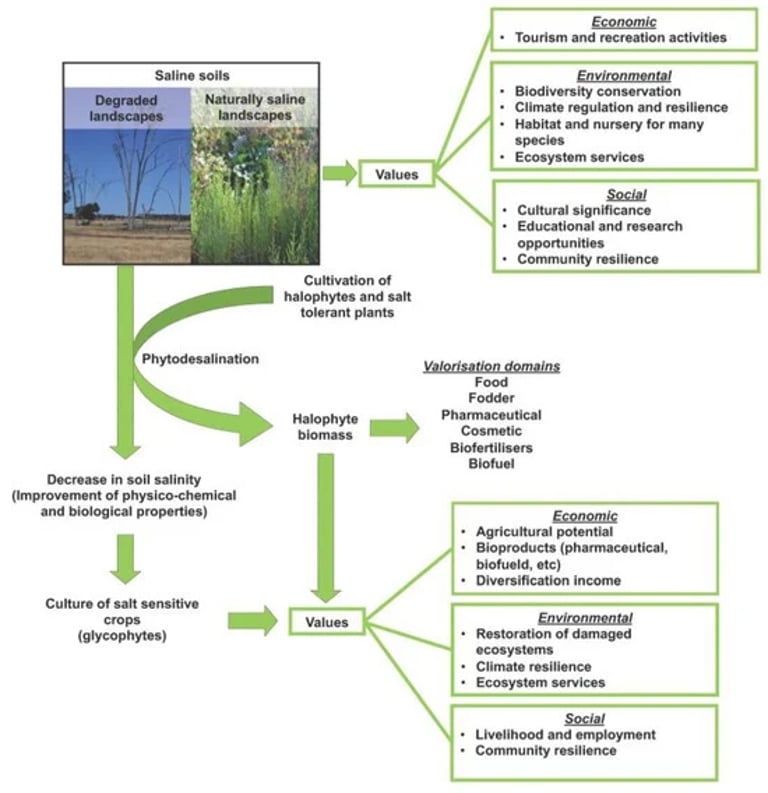Halophytes: The Future of Farming in Saline Soils to Combat Global Food Insecurity
August 20, 2024
Globally, around one billion hectares are currently affected by salinization, a problem projected to escalate to 50% of arable land by 2050.
Salinization poses a significant threat to food security, particularly as high-yield crop varieties like wheat, rice, and corn are generally salt-sensitive.
This phenomenon impacts approximately 11 million square kilometers of land, leading to an annual loss of 1.5 million hectares of agricultural land.
Climate change exacerbates salinity issues through rising sea levels and prolonged droughts, further increasing soil salinity in productive agricultural regions.
Human activities, such as excessive irrigation and chemical fertilizer use, are major contributors to soil salinization.
Salinization is a significant cause of soil degradation, affecting millions of hectares of agricultural land and threatening global food production.
Halophytes, or salt-tolerant plants, are proposed as valuable alternatives for agricultural use in saline environments, offering potential for food, fodder, and bioenergy production.
Recent advances in genetic engineering aim to improve salinity tolerance by manipulating genes involved in ion transport and antioxidant systems.
The study emphasizes the importance of integrating sustainable practices in saline agriculture to combat food insecurity and environmental degradation.
Despite its negative impacts, salt-affected land offers essential ecosystem services, including habitat provision and potential for sustainable food production.
Challenges remain, including the need for field studies to validate laboratory findings and address the complexities of salt tolerance in agricultural settings.
Innovative strategies are necessary to reclaim saline-affected lands and ensure food security for a growing global population, projected to reach 10 billion in 50 years.
Summary based on 3 sources